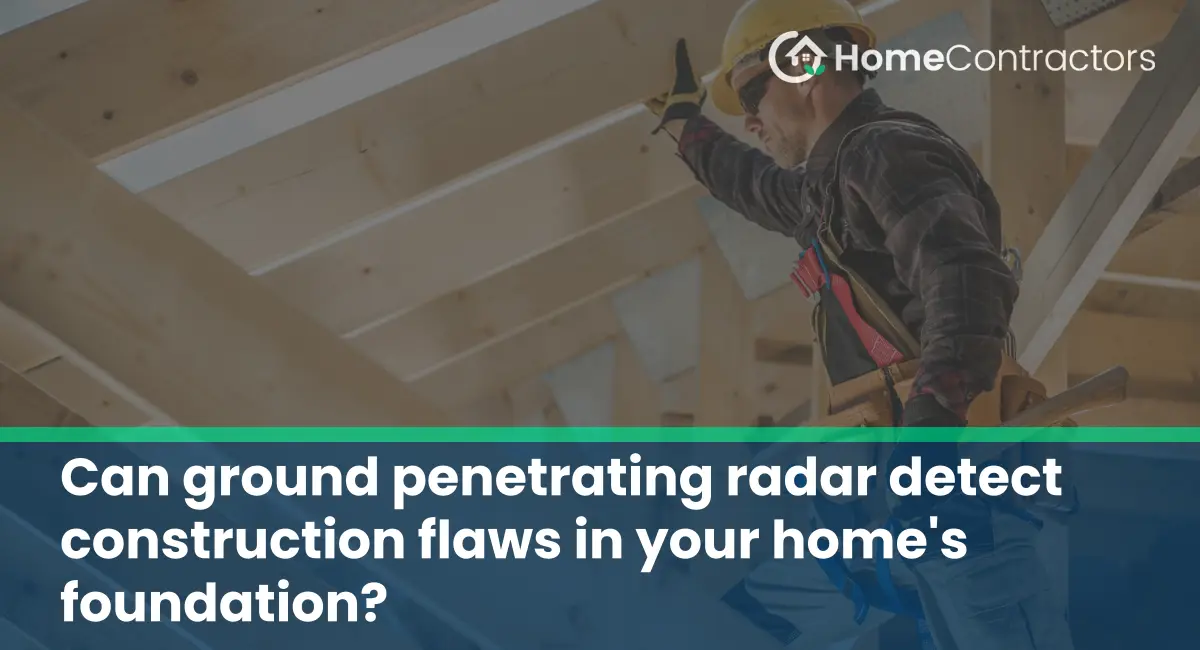The foundation of any building is a crucial component that provides stability and support. Construction flaws in the foundation can compromise its integrity and lead to structural problems that may become costly to repair. Ground penetrating radar (GPR) has emerged as a popular and effective technology for examining the subsurface conditions of a foundation. In this article, we will explore the capabilities of GPR in detecting construction flaws, its benefits, limitations, and its role in ensuring the longevity of your home’s foundation.
Understanding Ground Penetrating Radar (GPR):
Ground penetrating radar is a non-destructive geophysical technique that utilizes electromagnetic waves to scan and map subsurface objects, structures, and conditions. It operates by transmitting high-frequency radio waves into the ground, which then bounce back when they encounter materials of contrasting density or composition.
Detecting Construction Flaws in Foundations:
1. Identifying Void Spaces:
Ground penetrating radar can help identify voids or empty spaces beneath the foundation that may result from poor construction, settling, erosion, or other factors. These voids can weaken the foundation and lead to structural issues over time. GPR can efficiently map the areas where voids are present, allowing for timely repairs and reinforcement.
2. Locating Rebar Placement:
Reinforcing bars, commonly known as rebar, play a crucial role in strengthening concrete foundations. It is essential to ensure correct rebar placement during construction to guarantee the structural integrity of the foundation. GPR can accurately locate the position, depth, and alignment of rebar, ensuring that they are correctly placed and distributed.
3. Detecting Cracks and Fractures:
Cracks and fractures are common issues in foundations, often caused by settling, shifting soil, or inadequate construction practices. Using GPR, these flaws can be identified with precision. GPR can detect the presence, length, and depth of cracks, helping homeowners and professionals determine the severity of the issue and plan appropriate remediation measures.
Benefits of Ground Penetrating Radar:
1. Non-Destructive and Time-Efficient:
Unlike traditional methods that involve invasive and time-consuming techniques like excavation, GPR is non-destructive and swift. It allows for a comprehensive examination of the foundation without causing additional damage or disruption to the structure. GPR can provide immediate results, saving time and unnecessary expenses in the long run.
2. Objective and Accurate Results:
GPR generates high-resolution images of the subsurface, providing objective and accurate data on the condition of the foundation. The images assist professionals in identifying construction flaws and potential risks, enabling them to develop targeted repair strategies. With GPR, subjective interpretations are minimized, ensuring a more reliable assessment.
Limitations of Ground Penetrating Radar:
1. Limited Depth Range:
GPR has limitations in terms of the depth range it can accurately scan. The efficiency of GPR diminishes as the depth increases. For shallow foundations, GPR can provide detailed and precise data, but for deeper structural elements, other techniques may be necessary for a comprehensive assessment.
2. Interpretation Challenges:
While GPR can provide clear images of subsurface conditions, the interpretation of these images requires expertise and experience. Trained professionals who are familiar with construction flaws can accurately identify potential issues. Proper interpretation reduces the risk of misdiagnosis and ensures appropriate remedial actions are taken.
Ground penetrating radar has evolved as a valuable tool in the assessment of construction flaws in a home’s foundation. Through its non-invasive nature, it assists in identifying void spaces, locating rebar placement, and detecting cracks and fractures. However, it is essential to recognize the limitations of GPR, such as its depth range and the need for expert interpretation. Incorporating GPR assessments, along with professional expertise, can help ensure the longevity and stability of your home’s foundation, avoiding costly repairs and structural complications in the future.
